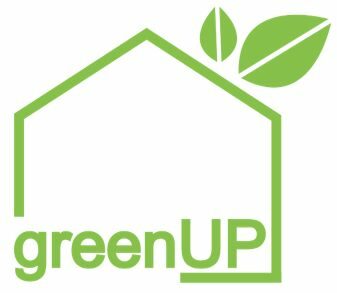In Europa sind bisher zehn größere Quartiere und Siedlungen in Plusenergiebauweise realisiert worden. Auch im Geschosswohnungsbau und in Bestandsquartieren ist eine Umsetzung solcher Energiekonzepte möglich wie das Aktivstadthaus in Frankfurt demonstriert. In den beiden Ausstellungen mit Musterhäusern in Plusenergiebauweise in Köln-Frechen und Wuppertal sind Plusenergiehäuser bei allen namhaften Anbietern erhältlich und zu besichtigen. Mit dem deutlichen Solarstromüberschuss der Gebäude und Siedlungen ist eine Entkoppelung von den steigenden Energiepreisen möglich und es lassen sich damit Pedelecs, CargoBikes und Elektromobile, dauerhaft kostengünstig und umweltfreundlich betreiben.
Eines der ersten Plusenergiehäuser, ist das 1994 bezogene “Heliotrop” in Freiburg von Rolf Disch:
https://sdg21.eu/db/plusenergiehaus-heliotrop
Übersicht zu Plusenergiequartieren und -siedlungen
In der Webdatenbank für nachhaltige Siedlungen und Quartiere finden Sie eine laufend aktualisierte Liste nach Postleitzahlen sortiert mit Steckbriefen, Akteuren, Adressen und Fotogalerien: www.plusenergie.siedlungen.eu
Blog zum Thema Plusenergiehaus:
https://sdg21.eu/blog…plusenergiehaus-siedlung
Im Folgenden eine Auflistung der realisierten Plusenergiequartiere und -Siedlungen nach Bezugs- bzw. Planungsjahr und Größe absteigend sortiert (Letzte Aktualisierung: 10/2023):
Plusenergiequartiere
Nach der Definition der DGNB AG Stadtquartiere gibt es in einem (Stadt)Quartier im Unterschied zu einer Wohnsiedlung einen nennenswerten Anteil von >15% der GFZ von Gewerbebauten innerhalb des Neu-/Baugebietes. Nach dieser Definition gibt es bisher zwei realisierte Plusenergiequartiere.
- Modellprojekt Möckernkiez in Berlin (D): 385 WE. Bezug: 2014/2015. Städtebau: Baufrösche Kassel; Architektur: 8 unterschiedliche Büros u.a. Rolf Disch und Baumschlager Eberle, Kaden Klingbeil, Sauerbruch Hutton. Internet: https://sdg21.eu/db/moeckernkiez-eg-berlin
- Plusenergiesiedlung Reininghaus Süd Graz (AT): 143 WE mit Büro- und Geschäftsflächen. Bezug: 2012. Architektur: Nussmüller Architekten ZT GmbH. Internet: www.aee-intec.at/…Id=141 bzw. www.aee.at/…
- Plusenergiesiedlung Schlierberg in Freiburg (D): 59 WE mit Büro- und Geschäftsflächen im sog. „Solarschiff“. Bezug: 2006. Architektur: Rolf Disch, Freiburg. Internet: https://sdg21.eu/db/solarsiedlung-am-schlierberg
Plusenergiesiedlungen
(chronologisch absteigend sortiert):
Realisiert
- Plusenergiesiedlung in Berlin-Weißensee Berlin-Adlershof (D): 128 WE. Kommunale Mietwohnungen. Richtfest: August 2016. Architektur: Deimel Oelschläger, Berlin. Internet: http://sdg21.eu/db/plusenergiehaeuser-in-berlin-adlershof
- Plusenergiesiedlung Ludmilla Wohnpark Landshut
- Plusenergiesiedlung Bad Vilbel (D): 16 WE. „KfW-Effizienzhaus 55″ Fertigstellung: 2014. Architektur: Bien-Zenker AG.
- In Dortmund gibt es das Förderprogramm “100 Energieplushäuser”. Dort sind insbesondere im Neubaugebiet “Phoenixsee” in einzelnen Gebäuden über das Neubaugebiet verteilt viele Plusenergiehäuser realisiert worden.
- Wohnsiedlung Sunny Watt in Zürich (CH): Größe: 19 WE. Bezug: 2010. Architektur: Beat Kämpfen, Zürich. Internet: www.kaempfen.com/projekte/587-wohnsiedlung-sunnywatt-2010
- Plusenergiesiedlung in Weiz (AT): Größe: 22 WE. Bezug: 2006. Architektur: Kaltenegger, Passail. Internet: www.aee.at/…
- BedZED in London (GB): 82 WE. Bezug: 2002. Architektur: Bill Dunster, London. Internet: www.zedfactory.com/bedzed
Nicht realisiert
- Plusenergiequartier Oberursel: Das größte Plusenergiequartier hätte in Oberursel bei Frankfurt mit rund 150 Wohnungen und gewerblicher Nutzung in 3 Bürogebäuden und 18 Wohngebäuden als Neubauten, entstehen können. Es wurde im Rahmen einer BMBF-Studie entwickelt, aber nicht realisiert. Eine umfangreiche Studie der TU Darmstadt Fachgebiet Entwerfen und Energieeffizientes Bauen, liegt dazu vor.
https://sdg21.eu/db/plusenergiequartier-oberursel - Plusenergiesiedlung in Grenzach (D) an der Grenze zu Basel: Geplant waren 74 WE, sie wurde aber nicht realisiert. Architektur: Rolf Disch, Freiburg: www.badische-zeitung.de/schatten-auf-den-solarhaeusern…
Recherche
Ausgewertet wurden dabei Projekte, die öffentlich gefördert wurden wie z.B. durch die Förderprogramme CONCERTO (EU), EnOB (BMWi), Morgenstadt und EnEff:Stadt (BMBF), ExWoSt, Nationale Stadtentwicklungspolitik (BMVBS/BBSR), Bioenergie-Regionen (BMELV), Nachhaltiges Bauen (DBU), Deutscher Solarpreis (EUROSOLAR), Solar- und Klimaschutzsiedlungen NRW, DGNB Arbeitsgruppe Neubau Stadtquartiere (sowie Vorträge der DGNB-Veranstaltungen wie z.B. zur BAU in München und der Consense, internationale Fachmesse und Kongress für nachhaltiges Bauen) und des Holzbaus (Internationales Holzbauforum IHF und Europäischer Kongress für urbanes Bauen mit Holz EBH). Weiterhin ausgewertet wurden Tagungsprogramme (u.a. die 7. Europäische Konferenz nachhaltiger Städte und Gemeinden des internationalen ICLEI-Städtenetzwerks, des internationalen Passivhauskongress und der RENEXPO), sowie aktuelle Veröffentlichungen insbesondere aus der Wohnungswirtschaft. Die Recherche erfolgte vorwiegend in deutschsprachigen Veröffentlichungen.
Links
Bundesregierung: Effizienzhaus Plus mit Elektromobilität
www.forschungsinitiative.de/effizienzhaus-plus
Plusenergiehaus im Bestand
www.enbausa.de/…erste-sanierung-zum-plusenergiehaus-ist-fertig…
Bottrop: Bundesweit erstes Plusenergiehaus im geförderten, mehrgeschossigen Wohnungsbau eröffnet (PM vom April 2015)
Literatur
Manfred Hegger et al. (2013): Aktivhaus – Das Grundlagenwerk: Vom Passivhaus zum Energieplushaus. München
Karsten Voss, Eike Musall (2011): Nullenergiegebäude. Internationale Projekte zum klimaneutralen Wohnen und Arbeiten. München
Richard Adrians / Arbeitskreis Ökologischer Holzbau AKÖH (2002): Das AktivHaus – Das Haus mit der besseren Energiebilanz. Wolnzach
